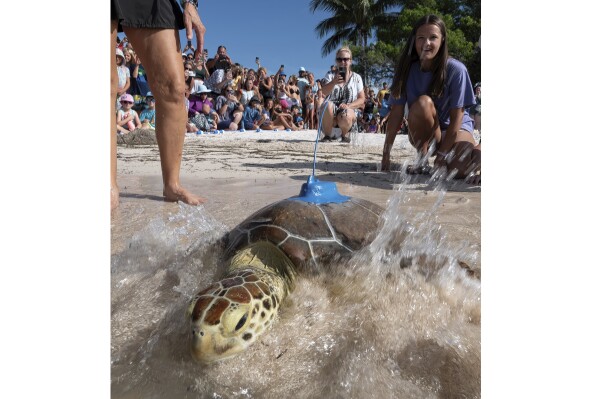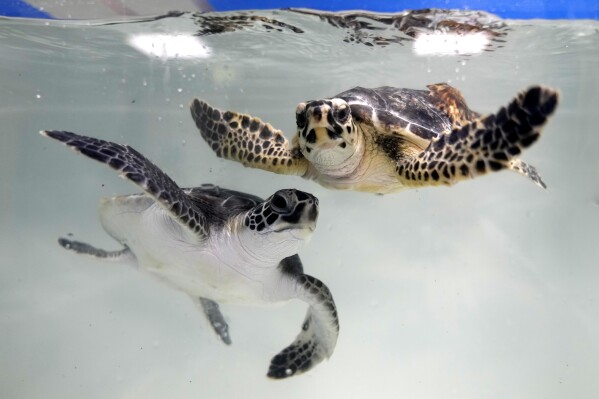Biologists look to expand suitable habitat for North America’s largest and rarest tortoise
ENGLE, N.M. (AP) — While the average life span of North America’s largest and most rare tortoise species is unknown, biologists have said it could span upward of a century.
So saving the endangered species is a long game — one that just got another nudge forward Friday as U.S. wildlife officials finalized an agreement with Ted Turner’s Endangered Species Fund that clears the way for the release of more Bolson tortoises on the media mogul’s ranch in central New Mexico.
It’s a step toward one day releasing the tortoise more broadly in the Southwest as conservationists push the federal government to consider crafting a recovery plan for the species. The tortoise is just the latest example of a growing effort to find new homes for endangered species as climate change and other threats push them from their historic habitats.
Now found only in the grasslands of north-central Mexico, the tortoise once had a much larger range that included the southwestern United States. Fossil records also show it was once present it the southern Great Plains, including parts of Texas and Oklahoma.
 Rehabilitated sea turtle released in Florida Keys to join Tour de Turtles
Rehabilitated sea turtle released in Florida Keys to join Tour de Turtles
 In the United Arab Emirates, struggling sea turtles get a helping hand
In the United Arab Emirates, struggling sea turtles get a helping hand
The wild population in Mexico is thought to consist of fewer than 2,500 tortoises, and experts say threats to the animals are mounting as they are hunted for food and collected as pets. Their habitat also is shrinking as more desert grasslands are converted to farmland.
While it’s been eons since the tortoises roamed wild in what is now New Mexico, Mike Phillips, director of the Turner Endangered Species Fund, said it’s time for biologists to reconsider what ecological reference points should matter most when talking about the recovery of an imperiled species.
Climate change is reshuffling the ecological deck and changing the importance of historical conditions in the recovery equation, Phillips said. He pointed to the case of the tortoise, noting that suitable habitat is moving north again as conditions in the Southwestern U.S. become drier and warmer.
Absent a willingness by wildlife managers to think more broadly, he said, species like the Bolson tortoise could have a bleak future.
“It would seem in a recovery context, historical range should be considered. Prehistoric range sometimes matters too,” he said in an interview. “But most importantly, future range — because recovery is all about righting a wrong, it’s about improving conditions. The future is what is of great relevance to recovery.”
The question that biologists have been trying to answer is whether the Armendaris Ranch makes for a good home.
So far the ranch, spanning more than 560 square miles (1,450 square kilometers) is proving to be an ideal spot. The landscape is similar to that where the tortoises are found in Mexico, and work done on the ranch and at the Living Desert Zoo and Gardens in Carlsbad has resulted in more than 400 tortoises being hatched since 2006.
Depending on weather conditions and forage availability, it can take a few years or more for a hatchling to reach just over 4 inches (110 millimeters) long. They can eventually grow to about 14.5 inches (370 millimeters).
The species was unknown to science until the late 1950s and has never been extensively studied.
“Each and every day we’re learning more and more about the Bolson tortoise’s natural history,” Phillips said.
The goal is to build a robust captive population that can be used as a source for future releases into the wild. That work will include getting state and federal permits to release tortoises outside of the enclosures on Turner lands.
Disclaimer: The copyright of this article belongs to the original author. Reposting this article is solely for the purpose of information dissemination and does not constitute any investment advice. If there is any infringement, please contact us immediately. We will make corrections or deletions as necessary. Thank you.






